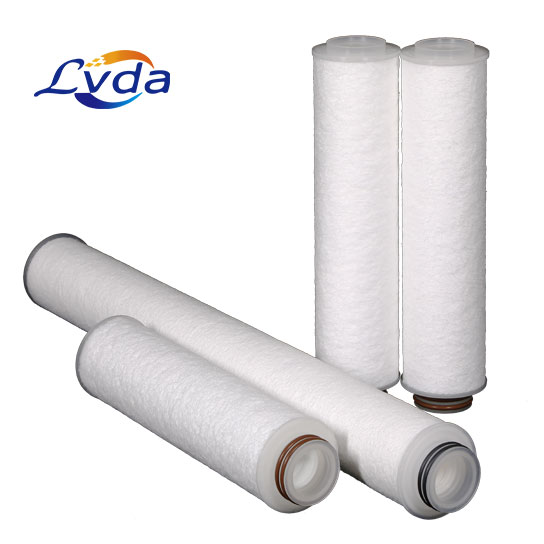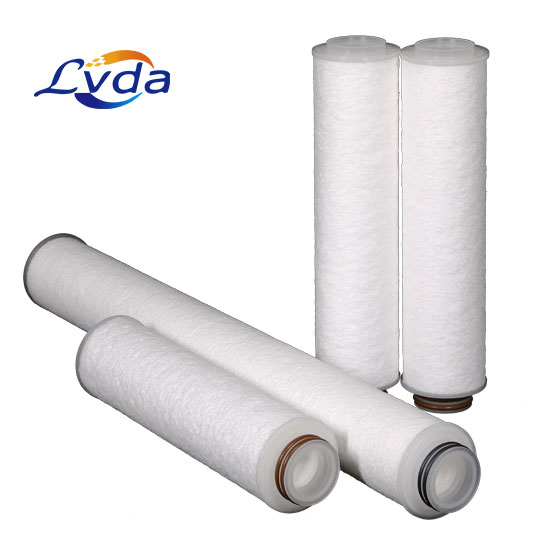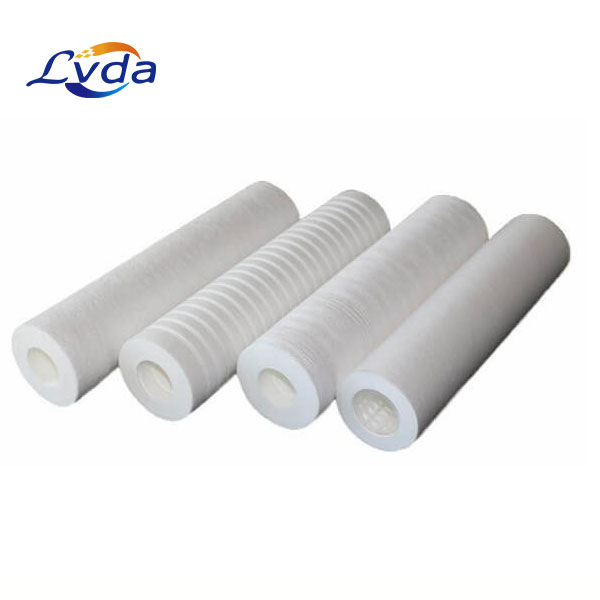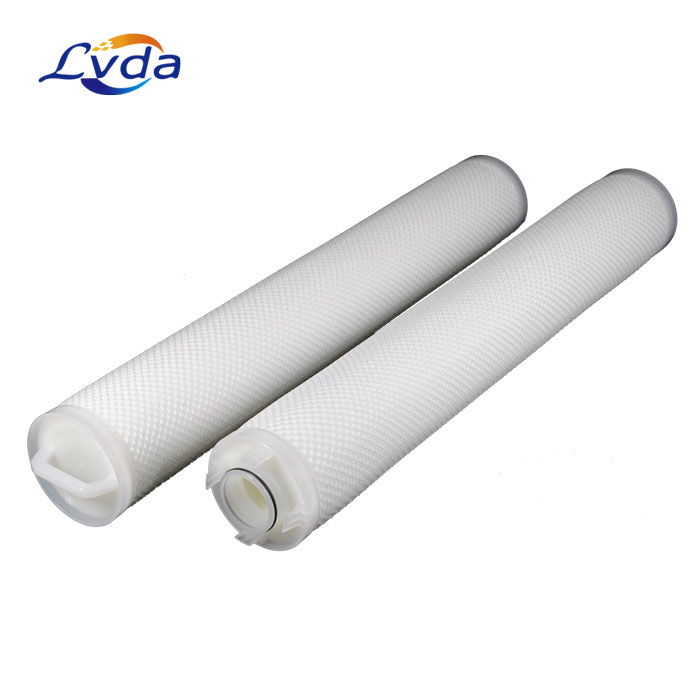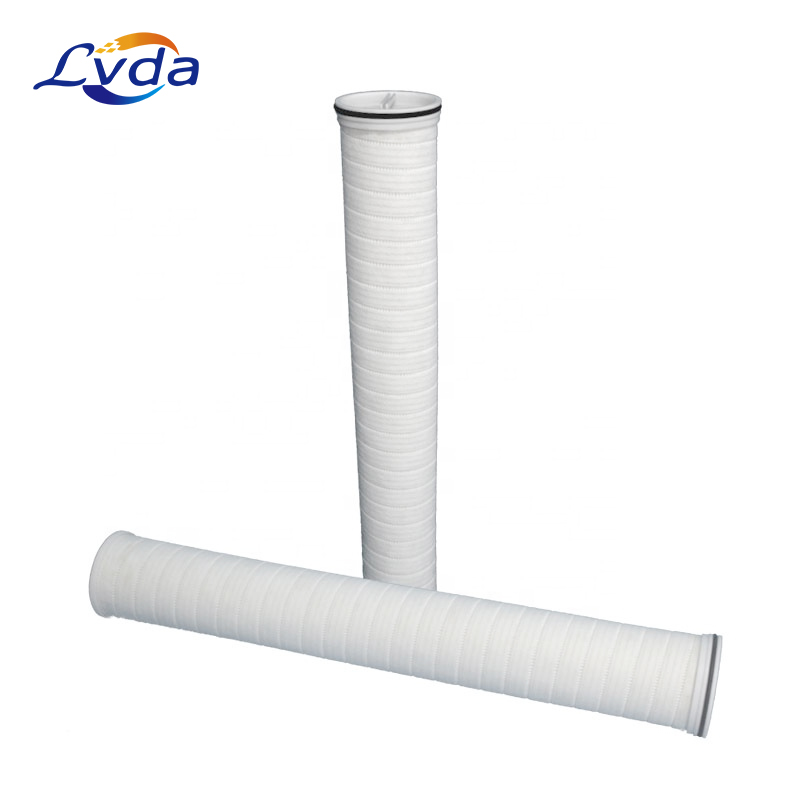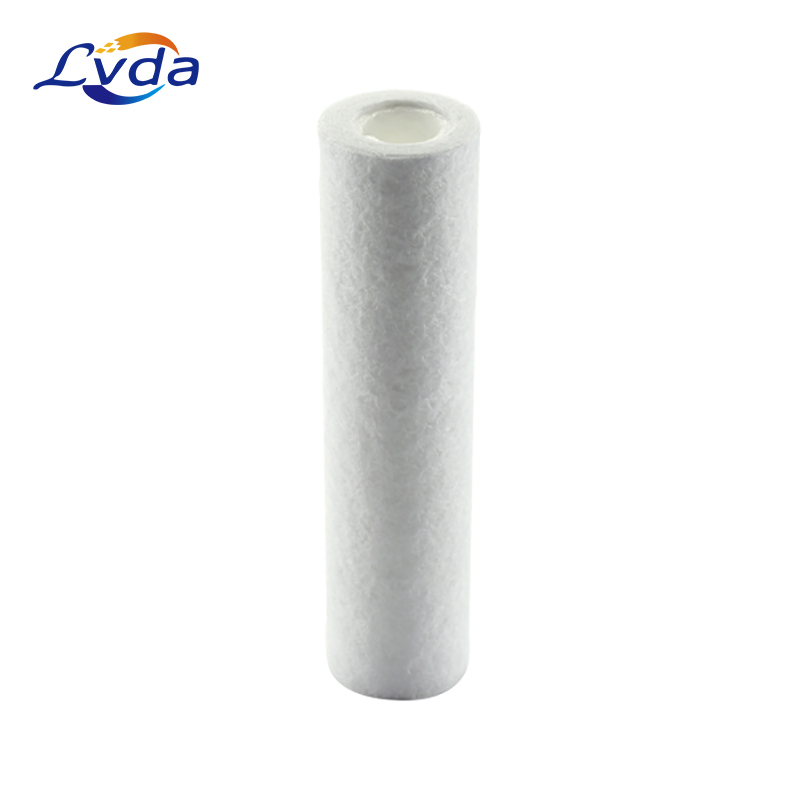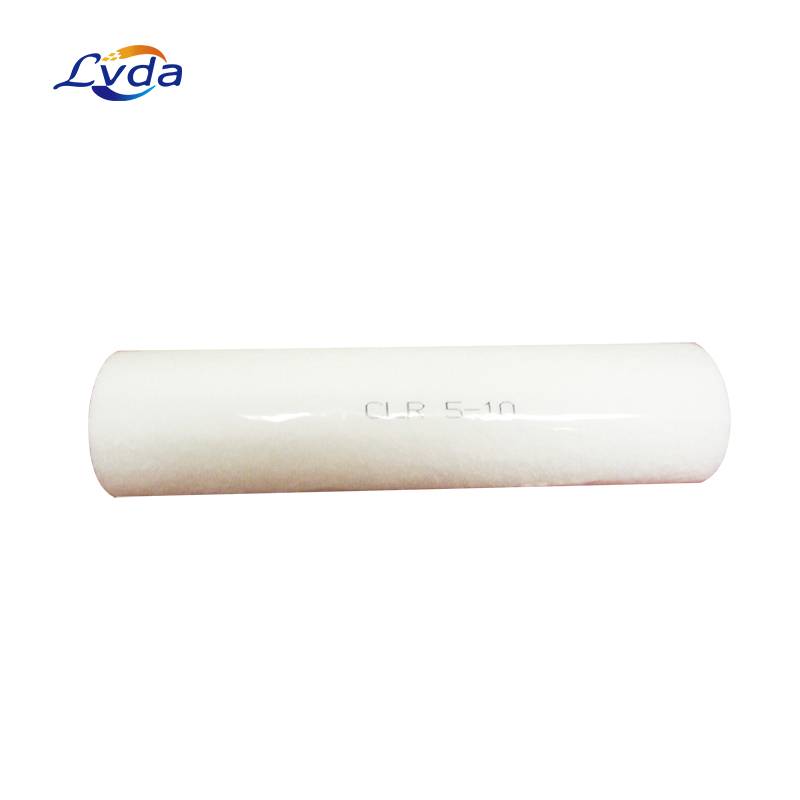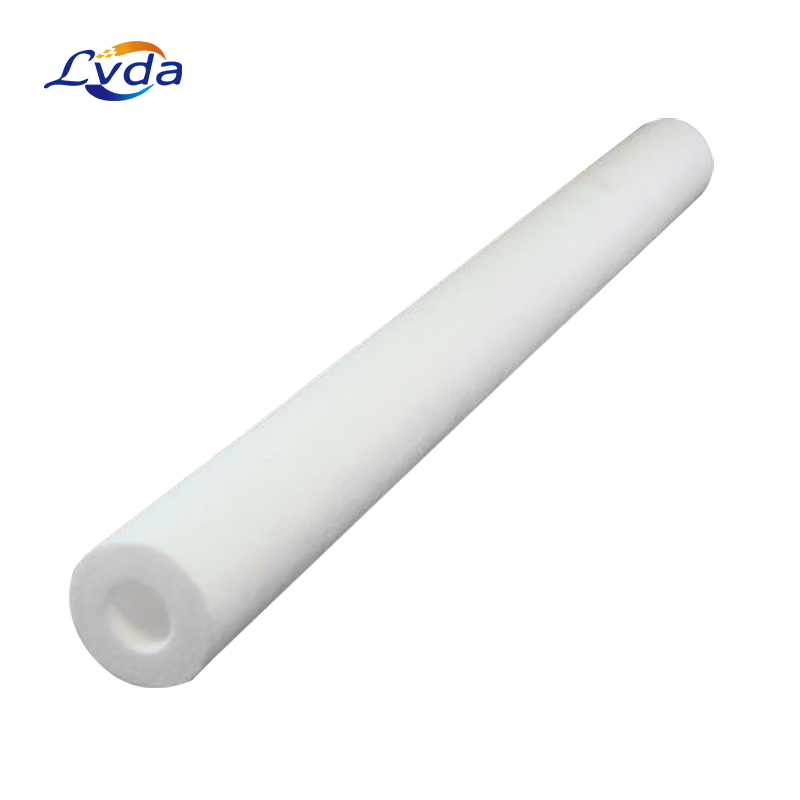Product Details
PP meltblown filter element is a tubular filter element made of non-toxic and
odorless polypropylene particles after heating, melting, spinning, pulling, and
receiving forming. It is not only used in water purification in large
quantities. Filtration of strong acids, alkalis and organic solvents, this
filter element is a fixed-pore depth filter element with ultra-fine
polypropylene fiber filter material as the filter medium, and the filter
material meets the relevant FDA requirements.
Application
Electric power, petrochemical, chemical, food and beverage,
automobile, industry, metallurgy, papermaking, medicine, microelectronics,
environmental protection water treatment and other industries.
Feature
Step-by-step filtering; sparse outside and inner dense design.
Internal thread structure is adopted; the compression resistance is enhanced;
the adsorption and compression resistance are greatly improved.
It is made of PP polypropylene material, which is healthy, safe and
non-toxic, and will not cause secondary water pollution.
Working Principle
It mainly uses activated carbon organic flocs with high carbon content, large
molecular weight and large specific surface area to physically adsorb impurities
in water to meet the water quality requirements. When the water flows through
the pores of activated carbon, various suspended particles, organic matter, etc.
under the action of van der Waals force It is adsorbed in the pores of the
activated carbon; at the same time, the chlorine (hypochlorous acid) adsorbed on
the surface of the activated carbon undergoes a chemical reaction on the surface
of the activated carbon and is reduced to chloride ions, thereby effectively
removing the chlorine and ensuring that the residual chlorine in the effluent is
less than 0.1ppm, satisfying Operating conditions of RO membranes. With the
passage of time, the retentate in the pores of the activated carbon and between
the particles gradually increases, so that the pressure difference between the
front and rear of the filter increases until it fails.


